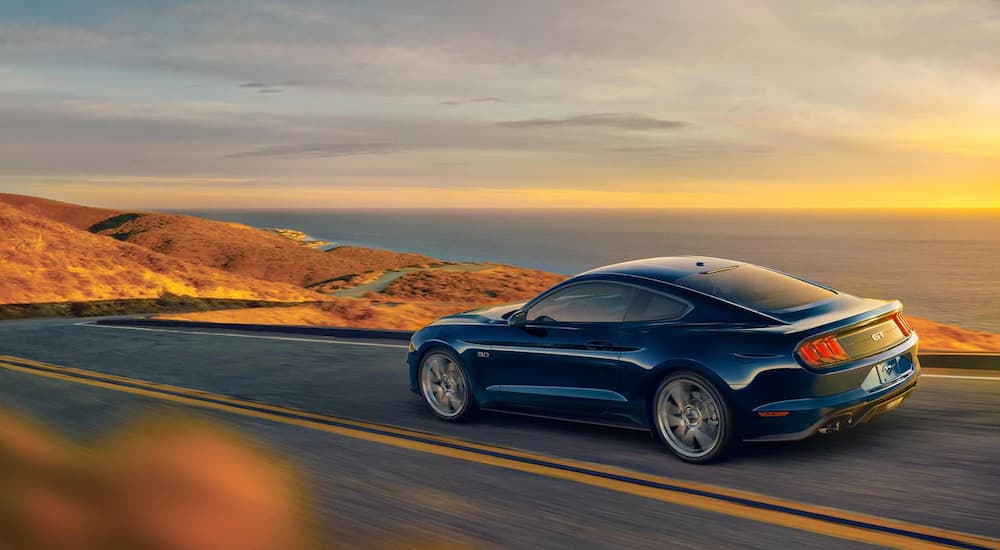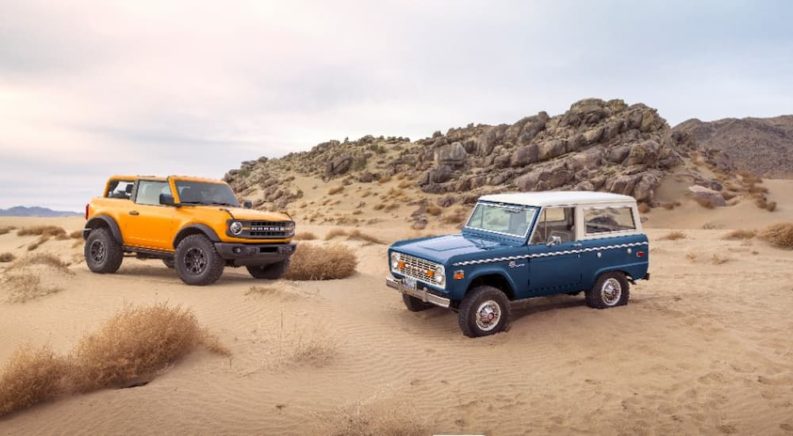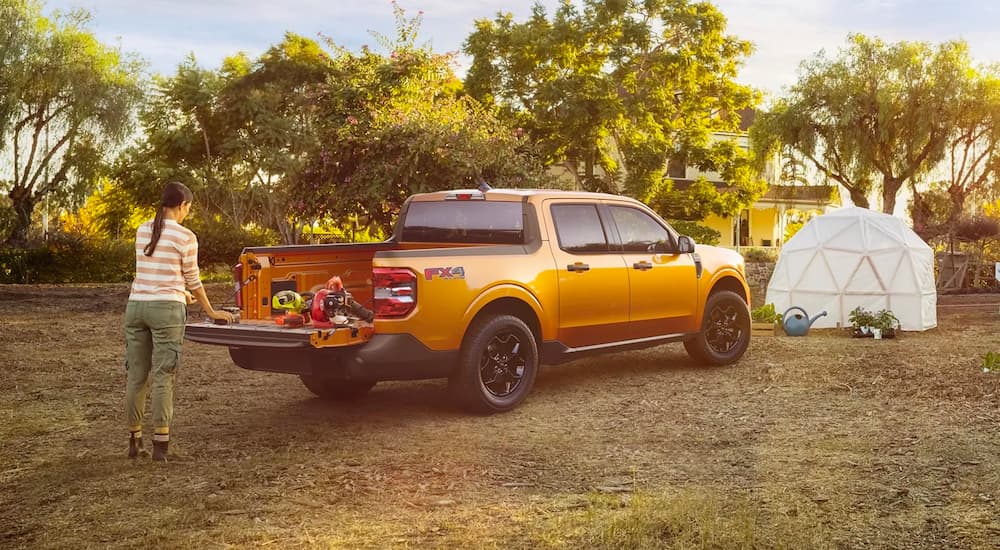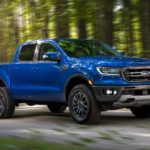When it comes to automobiles and automotive history, no company has its roots in America quite like Ford. Ford has produced a wide variety of vehicles over the years, some of which remain with us today, others of which we have forgotten about completely. The company does not cease to make progress, either; a visit to a certified pre-owned Ford dealership will prove to you that the company continues to make rapid progress in its production of vehicles, always striving for greater efficiency. That doesn’t mean abandoning the past however; Ford is so rooted in history that it continues to support and be supported by its customers.
When you have vehicles as classic and as renowned as Ford, you often hear the names come up in conversation, in advertisements, and so on. At this point in automotive history, there are a number of predominant brands, and within those brands, a number of predominant models whose names we take for granted. We hear the model name thrown around all the time, and when we hear the word, we automatically picture the vehicle, but we don’t often picture the original meaning of the word, nor do we consider how the original meaning of the word connects to the vehicle and its specific set of capabilities. The Ford company shows tremendous creativity in the naming of its vehicles, as we have seen models come and go over the course of the company’s life. Today, I’d like to dig a little deeper into the namesakes of some of the most iconic vehicles. Let’s neither dilly nor dally…here we go!

Mustang
Ah, what a classic. There are few cars as universally recognizable as the Ford Mustang. Of course, it is named after the horse, one would assume; after all, the horse is right on the grille of the car to prove it. Well, you’re not wrong, but you may not be absolutely right either. There is, in actuality, a bit of debate over the Mustang’s original namesake. The horse played an important role, but most accounts agree that it wasn’t actually the main inspiration for this legendary model name.
Lee Iacocca worked in collaboration with several engineers on the production of the first Mustang, and among them was a man named John Najjar, who was partly responsible for naming this new vehicle. Although some of its design elements had European inspiration, the idea behind this new model was to produce a vehicle embodying the American spirit. Najjar had a special fascination with a World War II fighter plane named the P-51 Mustang. While his suggestion to name the new car after the plane was not directly shut down, the Ford executives were not completely taken by this name, probably in large part due to its association with an all-too-recent war…also an airplane, which is not a product that Ford was trying to sell. Understandable, I suppose.
Najjar knew he had a good name on his hands, so he decided to put a different spin on it. He came back to the executives with the same name, but this time connected it to the Mustang horse; its freedom in the wild encapsulated the spirit of the new vehicle being produced in an exciting and energizing fashion. Of course, you know how the story ends. And how good that it was approved! Imagine this classic vehicle bearing a different name; it may not be a classic if it did.
Bronco
Oh, how I would love to get behind the wheel of a Ford Bronco. That probably is true for most of us. What a vehicle. Have you ever thought about that name? Well, the World War II influence does not end with the Mustang. In fact, the Bronco is the direct descendant of Ford’s World War II military vehicles. Once the company began making civilian models is when the Bronco name began to come into play.
Before we get to the namesake, consider the Bronco’s logo for a moment. What do you see? Well, it looks a lot like the Mustang logo, but rather than running, the horse is…bucking. And what is another name for a bucking horse? A Bronco! This name makes a lot of sense. Take the strength and durability of a military vehicle and combine it with the performance spirit of the Mustang, and what do you get? A Bronco. It’s simple, but many of us have probably never thought about it.
Maverick
You are probably thinking of the all-new 2022 Maverick pickup. Why wouldn’t you be? But did you know that this is the Maverick’s second appearance on the market? Well…kind of. The original Maverick was a 1970 model year compact car meant to serve as a replacement to the Falcon; in fact, its structure was essentially the same as the Falcon–the differences were mostly stylistic. This is somewhat ironic, given the meaning of the word Maverick.
The word “Maverick” generally has two connotations, both of which are related to the other. The first is an animal that roams freely and does not carry a brand. Ah, now we see how this name may tie into the Ford lineup! Consider a Mustang horse; it is a free-roaming horse–in other words, a maverick horse…hmm. The second connotation of the word is, essentially, what our culture would refer to as a “free-spirited person,” one who generally breaks stereotypes. While the original Maverick essentially broke no stereotypes, being built upon the foundation of the Falcon. This aspect of the namesake comes more into play with the new 2022 Maverick pickup.
To begin with, the Maverick truck completely obliterates the precedents set by its compact predecessor simply by being what it is: a pickup. Beyond that, it offers outstanding fuel economy for astonishing prices at 42 miles-per-gallon in the city for a starting MSRP of just $19,995. So, this free-roaming pickup certainly does defy stereotypes; there’s no doubt about that.
What’s in a Name?
There is a lot of history packed into these vehicle names. While we often hear them in advertisements and in conversations, read about them, and discuss them, we often don’t think about the thought process and the history behind these names, which encapsulate so much of each individual vehicle’s specialties and performance capabilities. These Ford vehicles have driven our nation’s automotive history, and each one has played its own pivotal role in developing the company into what it is today.
Any good name will give us an insight into what the thing itself is; just as a movie title should give us an idea of the movie’s plot, so too should a vehicle’s name give us an idea of its engineering, architecture, and capabilities. If it wasn’t clear before, I hope it is clear now that Ford’s vehicles do indeed give us this insight–the problem is that we don’t think about the name as deeply as we could. Of course, a name only goes so far. But, I have a hard time thinking of a brand more renowned, trusted, and proven than Ford. So, let us not forget the ways in which these vehicles’ names reflect their engineering, as we salute Ford for being a leader in the automotive world.





